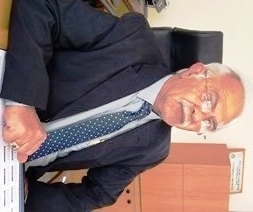Cyprus Lefkosia (Nicosia)
Without a doubt, Lefkosia (Nicosia) the 1000 year old capital of Cyprus should be on every visitor’s agenda. It lies roughly in the centre of the island; within easy reach of the other towns and a day in Lefkosia will be a day well spent.
The old walled city of Lefkosia is unique and definitely the place to head for first. Encircled by strong fortress walls built by the Venetians in the 16th century, the enchanting old city is scattered with buildings and monuments of historical interest as well as little shops, cafes and tavernas.
The Lefkosia Jewellery Museum and the Municipal Arts Centre are both well worth a visit. The ‘Leventeion’ Municipal Museum of Lefkosia, with an imaginative presentation of the capital’s history, was awarded the title ‘1991 European Museum of the Year’.
To walk through the old city is to step back in time. Narrow streets and old houses with ornate balconies jut out from weather beaten sandstone walls, and craftsmen in small workshops practise trades unchanged for centuries. ‘Laiki Geitonia’ – Folk Neighbourhood – is a pedestrian section, which has been carefully renovated to evoke the atmosphere of past days. The two main streets of old Lefkosia, Lidra and Onasagorou, are lined with shops of every type, and both streets are pedestrian only.
Not to be missed, is the unique Cyprus Museum, housing the island’s most important collection of Cypriot antiquities and treasures from the Neolithic Age to the Roman Period. In contrast to these ancient finds is the State Collection of Contemporary Art, and on the other side of town, just off the main Lemesos road, is the Cyprus Handicraft Centre.
Another award winner is the city’s renovated ‘Pyli Ammochostou’ – Famagusta Gate – one of the original entrances to the old city, which won the Europa Nostra award for its restoration. Many old churches are to be found in this part of town, and other places of interest are the Folk Art and Byzantine Museums, the Archbishopric, the Cathedral of Ayios Ioannis with its beautiful frescoes, the National Struggle Museum and the intriguing house of Hadjigeorgakis Kornesios – a fine example of l8th century architecture – which houses the Ethnological Museum.
Not far from these monuments is the ‘Green Line’ that divides the Republic from the illegally occupied area to the north. It has been in existence since 1974 when Turkish troops invaded the island and claimed 37% of northern Cyprus as a breakaway pseudo-state that has since been recognised by no nation, other than Turkey.
The modern city that has developed outside the walls is a cosmopolitan centre of business and culture. Lefkosia is regarded as the shopping heart of Cyprus, with a variety of restaurants, discos and bars.
Within easy reach of the capital are such historic gems as the l2th century painted church of Asinou, the regal tombs at Tamassos, the ancient city-kingdom of Idalion and the enchanting villages of Fikardou and Kakopetria.
Cyprus Paphos
Paphos is rapidly becoming the most important tourist center of Cyprus. It is a small city with about 30,000 inhabitants. The old Paphos is a small town, called Ktima. Today, there is also a modern Paphos, called Kato Paphos, which is the tourist neighborhood. This modern resort has many hotels, a boulevard with different cafes and bars, and only 20 minutes drive away, four 18 hole golf courses, Secret Valley, Minthis Hills, Aphrodite Hills and Elea Estates.
Paphos is a romantic city with a vibrant night-life. Close to the harbour are several archeological sites. In former times Nea Paphos was the most important city of the island, but earthquakes and invasions of the Saracens drove most of the people to the neighboring hamlet of Ktima. For lovers of ancient culture, Paphos is a must. Some places to visit are : the Paphos District Museum (a collection of archeological findings), the Georgios Eliades collection in Exo Vrysis Street (fossils and archaeological objects), the Byzantine fortress of Saranda Kolones (the 40 columns), the house of Dionysus (a Roman villa from the third century that was excavated in 1962 and that has some splendid mosaics), the house of Theseus (excavated in 1965) and the Tombs of the Kings on the west coast of Paphos.
Cyprus Larnaca
The place which is now called Larnaca is probably the oldest inhabited place in Cyprus.
The present city is built on the foundations of the old city state Kition (founded, according to legend, by the grandson of Noah). During the 20th century the city lost most of its importance to Famagusta. Because of the division of the island and the construction of the international airport at Larnaca, however, Larnaca is again a thriving center.
The places to visit are : the Turkish fortress (now a museum), the impressive church Church of Saint Lazarus (after his resurrection Lazarus is told to have become bishop in Cyprus). The church is supposed to have been built above his tomb. About 5 km west of Larnaca is a 4 km² salt lake. On the borders of the lake one can see the Muslim sanctuary Hala Sultan Tekke which contains the relics of Umm Haram, the aunt of the Prophet Mohammed, who died here in 647 AD.
Cyprus Limassol
Limassol lies on the south coast of the island, halfway between Larnaca and Paphos. Already in 2.000 BC people lived here, but it was only during the time of the crusaders that it became a flourishing city. Limassol is the second largest city of Cyprus, and certainly the most lively one. Cypriots sometimes call it “the Paris of Cyprus”. There is always some festival or celebration going on in town. Very renowned is the Wine Festival that takes place in September.
On the eastern side of the city are sandy beaches that stretch out for miles. Lovers of night-life fun will certainly not be disappointed in the many bars and discotheques in the old city.
The most important monuments are : the Limassol castle, the museum, and the wine producing companies. Outside of the city is the former royal town of Amathus (now a ruin, partially submerged by water). Kolossi Castle is a remainder of the Knights Templar and was the commanderia (the commanders castle) of the area, which also produced the famous sweet wine of Cyprus, Commandaria. The old city state of Kourion is close by and has a well restored theatre, which still holds performances of music and plays. A basilica and a stadium are also preserved.






